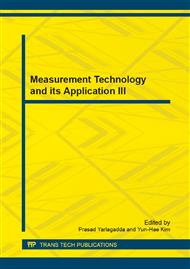[1]
Gubbins, Claire; Dooley, Lawrence. Exploring Social Network Dynamics Driving Knowledge Management for Innovation. Journal of Management Inquiry, 23(2), pp.162-185 (2014).
DOI: 10.1177/1056492613499203
Google Scholar
[2]
Aboelmaged, Mohamed Gamal. Linking operations performance to knowledge management capability: the mediating role of innovation performance. Production planning & Control, 25(1), pp.44-58 (2014).
DOI: 10.1080/09537287.2012.655802
Google Scholar
[3]
Alsabawy, Ahmed Younis; Cater-Steel, Aileen; Soar, Jeffrey. IT infrastructure services as a requirement for e-learning system success. Computers & Education, 69, pp.431-451(2013).
DOI: 10.1016/j.compedu.2013.07.035
Google Scholar
[4]
Ho C L, Dzeng R J. Construction safety training via E-Learning: Learning effectiveness and user satisfaction. Computers & Education, 2010, 55(2): 858-867.
DOI: 10.1016/j.compedu.2010.03.017
Google Scholar
[5]
Liu, Ying Chieh; Huang, Yu-An; Lin, Chad. Organizational Factors' Effects on the Success of E-Learning Systems and Organizational Benefits: An Empirical Study in Taiwan. International Review of Research in Open and Distance learning, 13(4), pp.130-151(2012).
DOI: 10.19173/irrodl.v13i4.1203
Google Scholar
[6]
Dwivedi, Pragya; Bharadwaj, Kamal K. Effective Trust-aware E-learning Recommender System based on Learning Styles and Knowledge Levels. Educational Technology& Society, 16(4), pp.201-216 (2013).
Google Scholar
[7]
Palacios-Marques, Daniel; Cortes-Grao, Rocio; Lobato Carral, Clemente. Outstanding knowledge competences and web 2. 0 practices for developing successful e-learning project management. International Journal of Project Management, 31(1), pp.14-21(2013).
DOI: 10.1016/j.ijproman.2012.08.002
Google Scholar
[8]
Khodakarami, Farnoosh; Chan, Yolande E. Exploring the role of customer relationship management (CRM) systems in customer knowledge creation. Information & Management, 51(1), pp.27-42(2014).
DOI: 10.1016/j.im.2013.09.001
Google Scholar
[9]
Lin, Hsiu-Fen. Examining the factors influencing knowledge management system adoption and continuance intention. Knowledge Management Research& Practice, 11(4), pp.389-404(2013).
DOI: 10.1057/kmrp.2012.24
Google Scholar
[10]
Sohn, Jong-Soo; Bae, Un-Bong; Chung, In-Jeong. Contents Recommendation Method Using Social Network Analysis. Wireless Personal Communications, 73(4), pp.1529-1546 (2013).
DOI: 10.1007/s11277-013-1264-z
Google Scholar
[11]
Li, Yung-Ming; Hsiao, Han-Wen; Lee, Yi-Lin. Recommending social network applications via social filtering mechanisms. Information Sciences, 239(8), pp.18-30(2013).
DOI: 10.1016/j.ins.2013.03.041
Google Scholar
[12]
Coello, J. M. A.; Yuming, Y.; Tobar, C. M. A Memory-based Collaborative Filtering Algorithm for Recommending Semantic Web Services. IEEE Latin America Transactions, 11(2), pp.795-801(2013).
DOI: 10.1109/tla.2013.6533969
Google Scholar
[13]
Sezaki, Naoto; Kise, Koichi. A System for Recommending Tags of Images Using Co-occurrence of Tags and Similar Images. Electronics and Communications in Japan, 94(12), pp.57-64 (2011).
DOI: 10.1002/ecj.10342
Google Scholar
[14]
Holzinger, Andreas. Social Media Mining and Social Network Analysis: Emerging Research. Online Information Review, 38(1), pp.157-158(2014).
DOI: 10.1108/oir-08-2013-0200
Google Scholar
[15]
Kim S, Hong J, Suh E. A diagnosis framework for identifying the current knowledge sharing activity status in a community of practice. Expert Systems with Applications, 39(18), pp.13093-13107(2012).
DOI: 10.1016/j.eswa.2012.05.092
Google Scholar
[16]
Slingsby, Aidan; Beecham, Roger; Wood, Jo. Visual analysis of social networks in space and time using smartphone logs. Pervasive and Mobile Computing, 9(6), pp.848-864 (2013).
DOI: 10.1016/j.pmcj.2013.07.002
Google Scholar
[17]
Bhat, Sajid Yousuf; Abulaish, Muhammad. Analysis and mining of online social networks: emerging trends and challenges. Wiley Interdisciplinary Reviews-Data Mining and Knowledge Discovery, 3(6), pp.408-444 (2013).
DOI: 10.1002/widm.1105
Google Scholar


